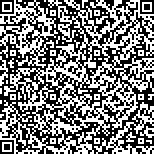下载中心
优秀审稿专家
优秀论文
相关链接
摘要

为了探究地基合成孔径雷达(cGBSAR)后向散射信号的时空变化规律和研究雷达土壤水分反演的影响因素,在内蒙古闪电河流域的昕元牧场站进行了地基雷达观测试验,本文结合以上观测试验的地基雷达数据进行波段、入射角度、极化通道3个雷达参数以及地表粗糙度参数对雷达的后向散射系数影响的分析,然后利用以上分析结果选择地表微波面散射模型,最后利用选定的地表微波面散射模型构建人工神经网络数据集来反演地表土壤水分。结果表明:(1)在地基雷达视场内,各地表微波面散射模型的模拟结果与地基雷达实测的L波段全极化数据拟合效果最佳的是AIEM-Oh模型。(2)通过对20°—60°范围内的雷达入射角度的AIEM-Oh模型后向散射系数模拟的绝对残差分析发现,雷达入射角为25°、41°和53°时模拟结果最接近雷达实测值。(3)最后通过分析土壤水分反演结果发现,当雷达入射角度为41°时的土壤水分反演精度最高,相关系数R是0.8080,RMSE是0.0385
In the process of the earth's water cycle, the status of soil moisture is very important. Soil moisture is an important parameter that controls the exchange of water, heat and energy within the various layers of the earth. In recent years, microwave remote sensing has become one of the important methods for monitoring surface soil moisture. There is a mathematical correlation between the amount of soil moisture and the dielectric constant of the soil. At the same time, the dielectric constant information of the soil directly has a systematic influence on the microwave backscattering intensity information, so by obtaining the backscattering information of the radar microwave signal, the dielectric information of the observation surface can be estimated, so as to carry out the soil moisture monitoring. It can be seen that using mathematical models to describe the correlation between backscatter information and soil moisture is helpful to obtain soil moisture information. A ground-based radar observation experiment is conducted at Xinyuan Ranch Station in the lightning river basin of Inner Mongolia to investigate the temporal and spatial variations of backscattered signals of ground-based synthetic aperture radar and study the influencing factors of radar soil moisture inversion. The radar backscattering coefficients are analyzed on the basis of the ground-based radar data from the above observation tests, including radar bands, incident angles, polarization channels, and other radar parameters. Then, the results of the preceding analysis are used to select a surface microwave surface scattering model. Lastly, an artificial neural network data set is constructed using the selected surface microwave surface scattering model to retrieve surface soil moisture. The results are as follows: (1) In the ground-based radar field of view, the simulation results of the surface microwave surface scattering model and the L-band full polarization data measured using the ground-based radar are the best fit for the AIEM-Oh model. (2) The absolute residual analysis of the AIEM-Oh model simulation results of radar incident angles in the range of 20°–60° indicated that the simulation results are closest to the radar measured values when the radar incident angles are 25°, 41°, and 53°. (3) The results of soil moisture inversion show that when the radar incident angle is 41°, the soil moisture inversion accuracy is highest, the correlation coefficient R is 0.8080, and the RMSE is 0.0385 m3/ m3. The conclusion of this paper is that the radar backscatter signal is affected by the combination of the radar incident angle and surface roughness. Therefore, a reasonable selection of radar incident angle by considering surface roughness can improve the accuracy of soil moisture retrieval. On the one hand, this research uses the surface microwave surface scattering model to simulate the neural network training data set, which is equivalent to using the practical physical simulation data set to embed the mathematical model (neural network) with the physical foundation, so as to reasonably explain the effectiveness of the training data set. On the other hand, through the sensitivity analysis of radar measurement data, the law of backscattering strength with the radar incident angle is obtained, which weakens the inversion error caused by the spatial heterogeneity of radar data. The improvement of soil moisture retrieval methods also provides new ideas for improving soil moisture retrieval.

